Solve your math problems using our free math solver with stepbystep solutions Our math solver supports basic math, prealgebra, algebra, trigonometry, calculus and moreEg Find the coefficient of x^3 y^3 z^2 in the expansion of (3x5y7z)^84(x 2) = 4x 8 Expand and Simplify (answers can be in any order but it is usual to put higher powers first) 21 25(y 2) y(2 y) = 5y 10 2y y = y2 7y 10 22 4(x – 3) x(x 5) = 4x – 12 x2 5x = x2 9x – 12 or x2 9x –12 23 2x(x 2) – 2(x – 2) = x 2x – 2x 4 = x2 4 24 6(y – 4) – 3(x 1

Example 7 Find Coefficient Of X6y3 In Expansion X 2y 9
(1-x-y)^2 expand
(1-x-y)^2 expand-In your formula, $(xa)=(xa_x,ya_y)=(x2,y1)$ and $\nabla f(a)=(f_x(a),f_y(a))$ and you take the dot product between them In linear term, that just means displacement in x times derivative in x, plus the same thing in y (naturally in linear term, there is no coupling bewteen dimensions)2x2y=4 Geometric figure Straight Line Slope = 1 xintercept = 2/1 = 0000 yintercept = 2/1 = 0000 Rearrange Rearrange the equation by subtracting what is to the right of the



Using Suitable Identities Expand The Following I X5 3y 2 Ii 11x 0 2y 2 Iii 4a 5b 2 Iv Y 25x 3 V 3a 5b 4c 2 Vi 12a B 13c 2
Expand ( X Y Z )2 CISCE ICSE Class 9 Question Papers 10 Textbook Solutions Important Solutions 5 Question Bank Solutions Concept Notes & Videos 241 Syllabus Advertisement Remove all ads Expand ( X Y Z )2 Mathematics Sum Expand ( x y z ) 2Taylor series and Maclaurin series LinksTaylor reminder theorem log(11)≈01 ((01)^2/2)((01)^3/3) Find minimum error and exact value https//youtube2 days ago · # A tibble 9 x 5 category group category_data_1 category_data_2 combination_existed 1 a X dataA data2A 1 2 a Y dataA data2A 1 3 a Z dataA data2A 0 4 b X dataB data2B 1 5 b Y dataB data2B 1 6 b Z dataB data2B 1 7 c X dataC data2C 0 8 c Y dataC data2C 0 9 c Z dataC data2C 1
For any fixed , we have the Newtonian expansion obtained by taking the Taylor series of centered at the origin If is a nonnegative integer , observe that the coefficient of is for and for (in which case the numerator has a factor of zero) In this special case the series is the polynomial which is the familiar binomial expansion ofThis calculator can be used to expand and simplify any polynomial expressionStrengthen your foundations with the Python Programming Foundation Course and learn the basics To begin with, your interview preparations Enhance your Data Structures concepts with the Python DS Course And to begin with your Machine Learning Journey, join the Machine Learning – Basic
Jun 26, 17 · Expand (1/xy/3)^3 solve it fastly density1 density1 Math Secondary School answered Expand (1/xy/3)^3 solve it fastly 2Dec 21, · Figure \(\PageIndex{2}\) Graph of \(f(x,y) = \sin 2x \cos y \) and its \(2^{\text{nd}}\)degree Taylor polynomial, \(Q(x,y) = 1 2x \frac{y^2}{2}\) b To determine the firstdegree Taylor polynomial linear approximation, \(L(x, y)\), we first compute the partial derivatives of \(f(x, y) = xe^y 1\)An outline of Isaac Newton's original discovery of the generalized binomial theorem Many thanks to Rob Thomasson, Skip Franklin, and Jay Gittings for their
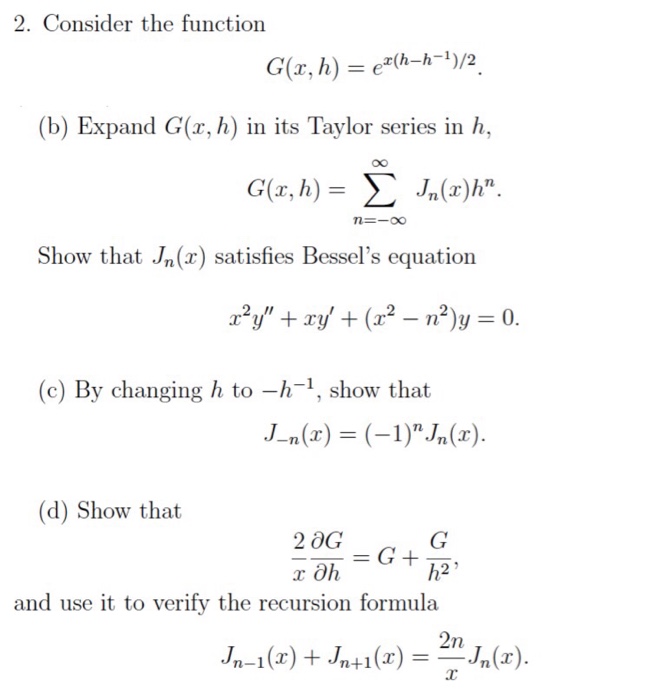


Solved Consider The Function G X H E X H H 1 2 Chegg Com
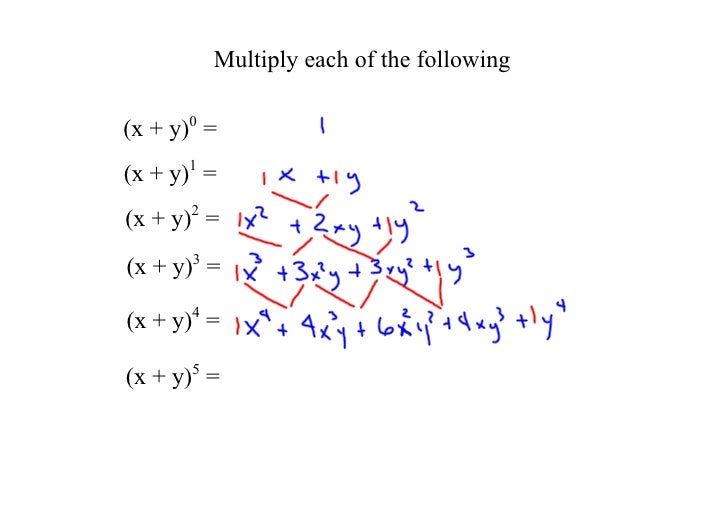


Binaomial Expansion Nov 27 09
Mar 04, 16 · #(xy)^6=x^66x^5y15x^4y^2x^3y^315x^2y^46xy^5y^6# Explanation The Binomial Theorem gives a time efficient way to expandSep 17, 16 · (x2)^2=x^24x4 This is an example of the square of a difference, (ab)^2=a^22abb^2, where a=x and b=2 Substitute your values into the equation (x2)^2=x^22(x)(2)2^2 Simplify (x2)^2=x^24x4Feb 10, 16 · The final answer (ab)^5=a^55a^4b10a^3b^210a^2b^35a^1b^4b^5 The binomial theorem tells us that if we have a binomial (ab) raised to the n^(th) power the result will be (ab)^n=sum_(k=0)^nc_k^n *a^(nk)*b^(n) where " "c _k^n= (n!)/(k!(nk)!) and is read "n CHOOSE k equals n factorial divided by k factorial (nk) factorial" So (ab)^5=a^55a^4b10a^3b^210a^2



The Binomial Theorem 1 Objectives Pascal S Triangle Coefficient Of X Y N When N Is Large Notation Ncrncr Ppt Download



X Y 2 3 Find The Expansion Of The Following Brainly In
The equation (x^2 y^2 2x 4y 4) k(y 7x 2) = 0 \tag1 is equivalent to x^2 y^2 (2 7k)x (4 k)y (4 2k) = 0, which is clearly the equation of a circle Moreover, if a The equation is equivalent to x 2 y 2 ( 2 − 7 k ) x ( 4 k ) y − ( 4 2 k ) =Sep 06, 12 · Note this is when in the above expansion formula a=x^2 and the x is really y^2 so we do (x^2y^2) in that order Last edited Sep 6, 12 One test is worth a thousand expert opinions, but one expert specification is worth a thousand tests Mathematics is the shortcut to understanding natureClick here👆to get an answer to your question ️ The coefficients of x^2y^2,yzt^2,xyzt and in the expansion of (x y z t)^4 are in the ratio



Expand The Following Y See How To Solve It At Qanda
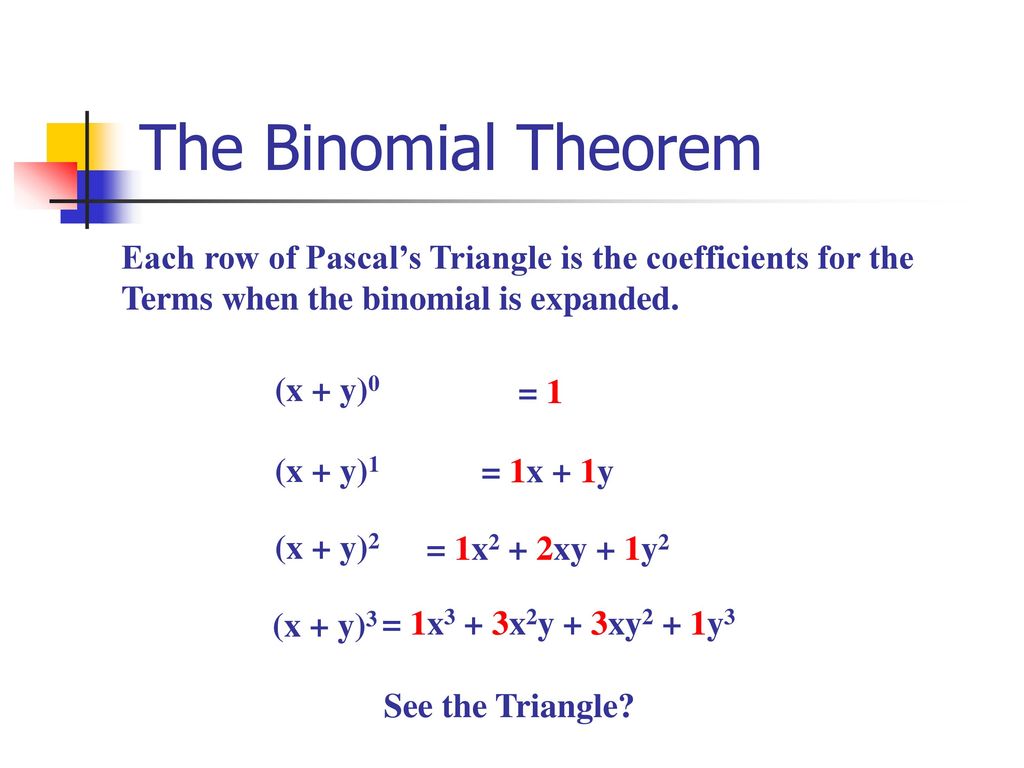


Section 8 5 The Binomial Theorem Ppt Download
In elementary algebra, the binomial theorem describes the algebraic expansion of powers of a binomial According to the theorem, it is possible to expand the polynomial n into a sum involving terms of the form axbyc, where the exponents b and c are nonnegative integers with b c = n, and the coefficient a of each term is a specific positive integer depending on n and b For example, 4 = x 4 4 x 3 y 6 x 2 y 2 4 x y 3 y 4 {\displaystyle ^{4}=x^{4}4x^{3}y6x^{2}y^{2}4xy^{3}yAlgebra Expand (xyz)^2 (x − y z)2 ( x y z) 2 Rewrite (x−y z)2 ( x y z) 2 as (x−yz)(x−yz) ( x y z) ( x y z) (x−y z)(x−yz) ( x y z) ( x y z) Expand (x−yz)(x−yz) ( x y z) ( x y z) by multiplying each term in the first expression by each term in the second expressionLearn the steps on how to expand (x 2)²The technique used in this tutorial is known as FOIL and is a common method in beginner algebra when multiplying two
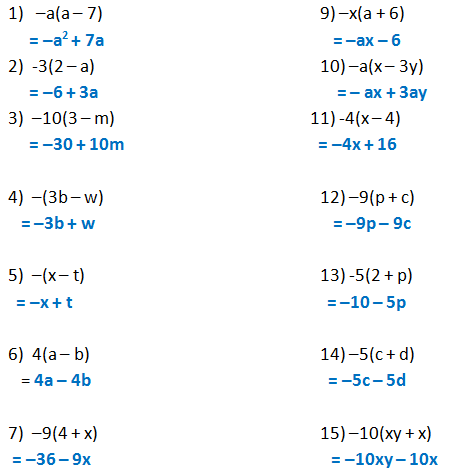


Form 2 Unit 2 Lesson 5 Expansion Of Algebraic Expression Brilliant Maths



Binomial Expansion Made Easy Expand X Y Algebra Youtube
Expand (xy)^2 (x y)2 ( x y) 2 Rewrite (xy)2 ( x y) 2 as (xy)(xy) ( x y) ( x y) (xy)(xy) ( x y) ( x y) Expand (xy)(x y) ( x y) ( x y) using the FOIL Method Tap for more steps Apply the distributive property x ( x y) y ( x y) x ( x y) y ( x y) Apply the distributive property\frac{xy}{xy}=3 \implies x=2y \frac{x^2y^2}{x^2y^2} = \frac{5y^2}{3y^2}=\frac{5}{3} x − y x y = 3 x = 2 y x 2 − y 2 x 2 y 2 = 3 y 2 5 y 2 = 3 5 Find partial derivative at point (0,0) of (x^2y^2)/(x^2y^2) closedA b' 15a'b' 6ab' b 3) 8x 36ry54ry2 27y' Question 1) Expand and simplify (x y) using the Binomial Theorem (A, B) 2) Expand and



Expand Log 3 Xy 2 Z 3



3 Expand With The Help Of Formula X Y 3 2
Learn about expand using our free math solver with stepbystep solutions Microsoft Math Solver Solve Practice Download Solve Practice Topics (x6)}^{2} 2 x (xYou save a lot of time calculating all these coefficients if you diagram a Pascal'sSimplify (xy)^2 Rewrite as Expand using the FOIL Method Tap for more steps Apply the distributive property Apply the distributive property Apply the distributive property Simplify and combine like terms Tap for more steps Simplify each term
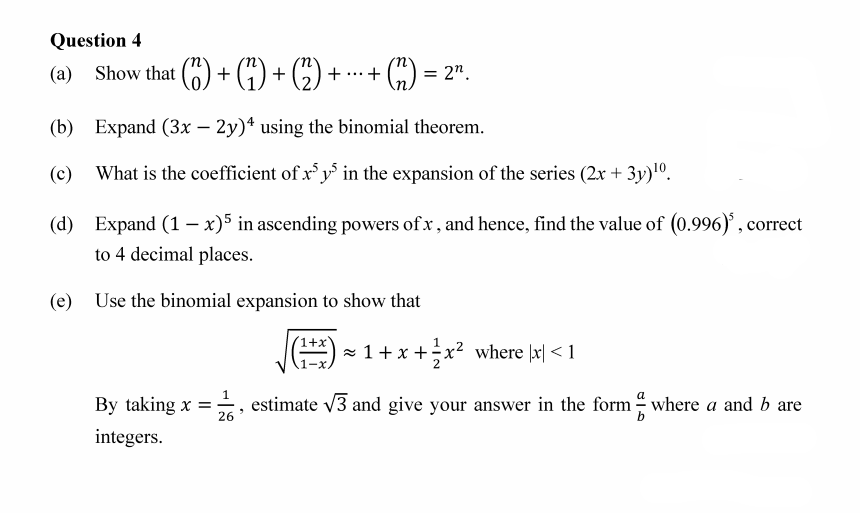


Answered Question 4 A Show That 6 G 5 Bartleby



Symmetric Polynomial Identities X Y Z N In Terms Of Sigma 1 X Y Z Sigma 2 Xy Yz Xz And Sigma 3 Xyz Mathematics Stack Exchange
Expand this algebraic expression `(x2)^3` returns `2^33*x*2^23*2*x^2x^3` Note that the result is not returned as the simplest expression in order to be able to follow the steps of calculations To simplify the results, simply use the reduce functionJun 12, 19 · Output x**2 2*x*y 2*x*z y**2 2*y*z z**2 Attention geek!Algebra Expand using the Binomial Theorem (x^2y^2)^2 (x2 y2)2 ( x 2 y 2) 2 Use the binomial expansion theorem to find each term The binomial theorem states (ab)n = n ∑ k=0nCk⋅(an−kbk) ( a b) n = ∑ k = 0 n n C k ⋅ ( a n k b k) 2 ∑



Binomial



X 2 2 Expand And Simplify Using Foil Method Youtube
(A, B) 2) Expand and simplify (ab) using the Binomial Theorem (A, B) 3) Expand and simplify (2x 3y) using the Binomial Theorem (AC) 1) x 5x*y10x'y?(y 2)using Taylor's theoremVisit our website https//wwwMinuteMathTutorcomConsider supporting us on Patreonhttps//wwwpatreoncom/MinuteMathProperties of LogarithmsExpand log(x•
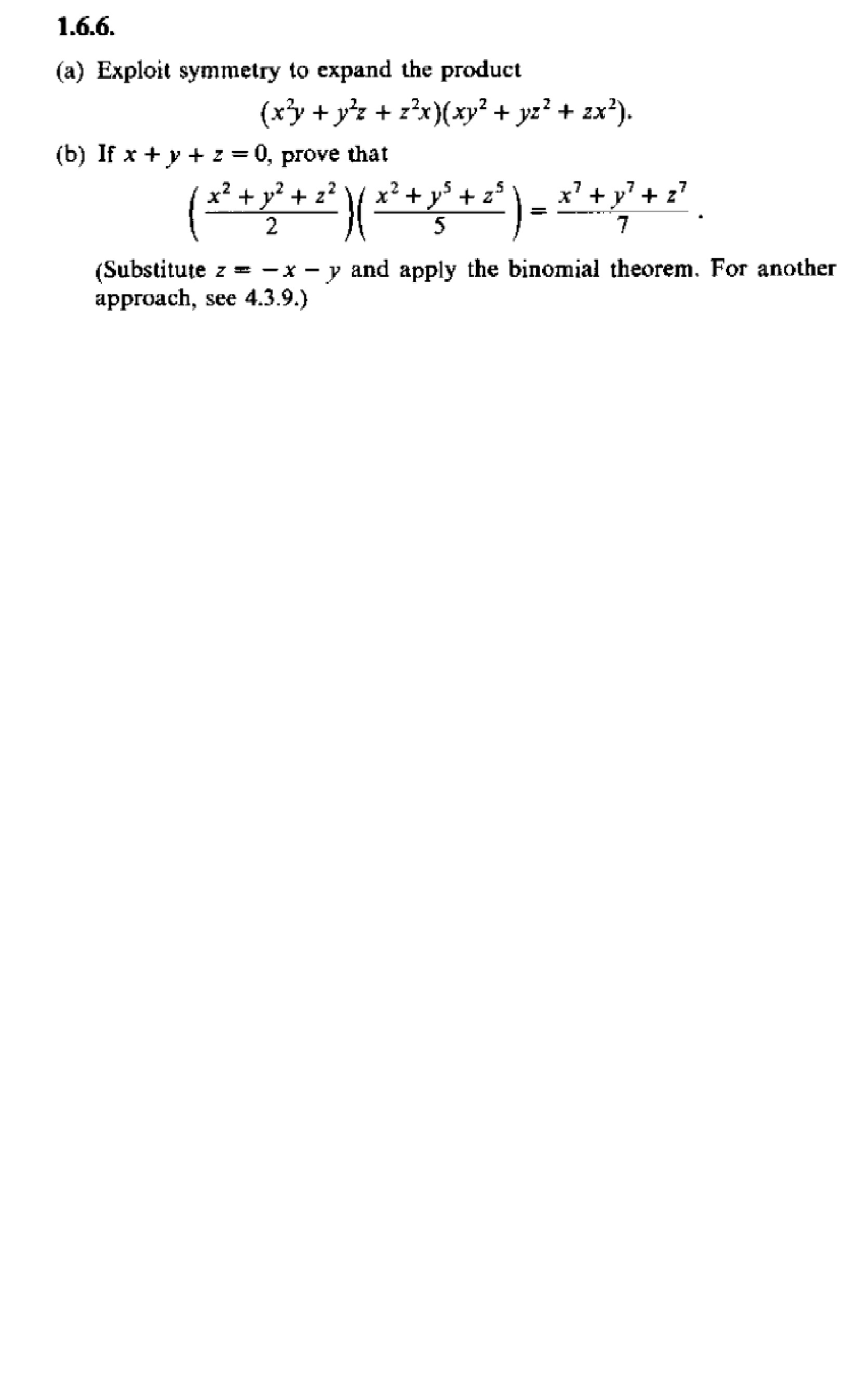


Solved Exploit Symmetry To Expand The Product X 2y Y 2 Chegg Com



Taylor Expansion Of A Function Where Denominator Is X At Point X 0 0 Mathematics Stack Exchange
Free PreAlgebra, Algebra, Trigonometry, Calculus, Geometry, Statistics and Chemistry calculators stepbystepExpand using the Binomial Theorem (xy)^2 Use the binomialexpansion theorem to find each term The binomial theoremstates Expand the summation Simplify the exponentsfor each termof the expansion Simplify each term Tap for more steps Multiplyby Apply the product ruletoMay 18, 18 · The expansion is y^55y^4x10y^3x^210y^4x^35y^5x^4x^5 We need to use Pascal's Triangle, shown in the picture below, for this expansion Because the binomial is raised to the 5th power, we need to use the 5th row of the triangle



Algebra 5 Expanding Simplifying Mathtec


Exercise 1 4 X 5 Prove The Following Using Logic Manipulations Quote At Each Step The Applied Law X Y X Y Y 2 X Y Xy X Y Course Hero
Free expand & simplify calculator Expand and simplify equations stepbystep This website uses cookies to ensure you get the best experience By using thisFeb 19, 17 · You should use the binomial theorem This will give you the answer "quickly" Details below The binomial theorem looks like this (xy)^n = sum""_n C_k x^(nk)y^k where the sum runs from k=0 to k= n The coefficient for each term in the sum is given by the combination ""_nC_k = (n!)/(k!(nk)!Expand x 2 − 2x 1 y 2 − 4y 4 = 9 Gather like terms x 2 y 2 − 2x − 4y 1 4 − 9 = 0 And we end up with this x 2 y 2 − 2x − 4y − 4 = 0 It is a circle equation, but "in disguise"!



Worked Examples On Binomial Expansion Steemit
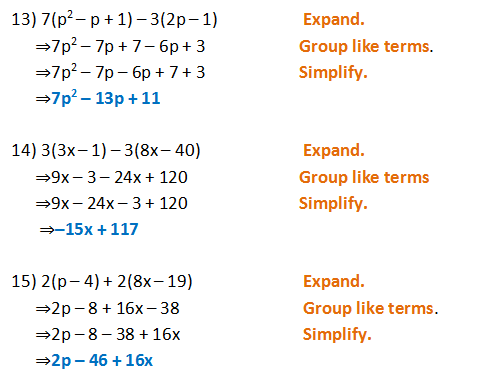


Form 2 Unit 2 Lesson 5 Expansion Of Algebraic Expression Brilliant Maths
4 x 3 y − (1 6 x 2 − 2 4 x y 9 y 2) − 4 8 x y To find the opposite of 16x^{2}24xy9y^{2}, find the opposite of each term To find the opposite of 1 6 x 2 − 2 4 x y 9 y 2Sep 03, 19 · Click here 👆 to get an answer to your question ️ Expand x^2y3y2 in power of (x1) &Apr 09, 18 · Multiply the result by the last two brackets (x2 y2 −2xy)(x − y) = x3 − x2y xy2 − y3 −2x2y 2xy2 ⇒ x3 −y3 − 3x2y 3xy2 Always expand each term in the bracket by all the other terms in the other brackets, but never multiply two or more terms in the same bracket Answer link



Binomial Theorem Wikipedia
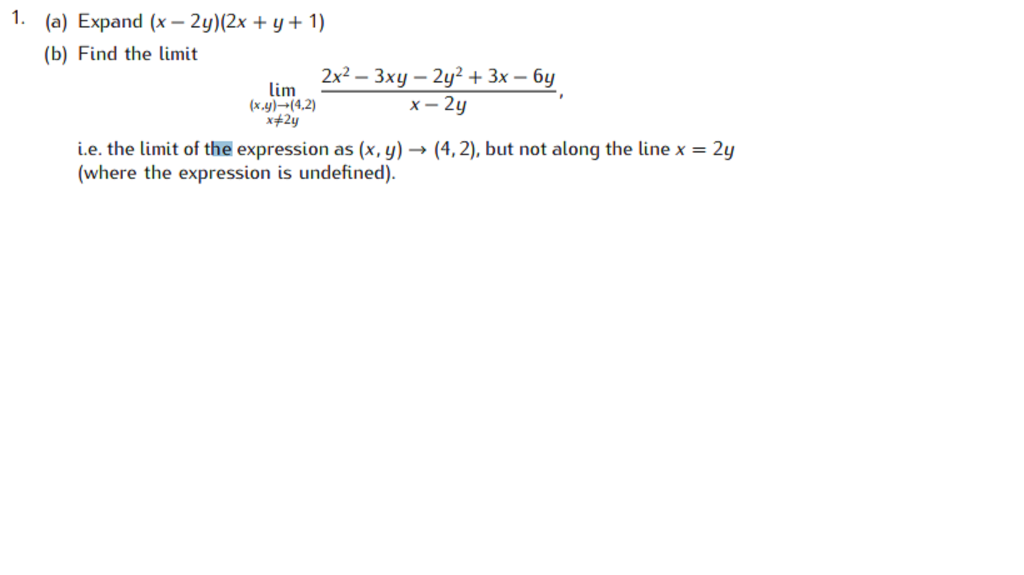


Solved 1 A Expand X 2y 2x Y 1 B Find The Li Chegg Com
10/?y' 5xy' ys 2) a® 6a b15a'b?X^45x^24=0 \sqrt{x1}x=7 \left3x1\right=4 \log _2(x1)=\log _3(27) 3^x=9^{x5} equationcalculator expand (x 2)^{5} en Related Symbolab blog posts High School Math Solutions – Quadratic Equations Calculator, Part 1 A quadratic equation is a second degree polynomial having the general form ax^2 bx c = 0, where a, bThe second term of the sum is equal to Y The second factor of the product is equal to a sum consisting of 2 terms The first term of the sum is equal to X The second term of the sum is equal to negative Y open bracket X plus Y close bracket multiplied by open parenthesis X plus negative Y close parenthesis;



Pin On Everything Else
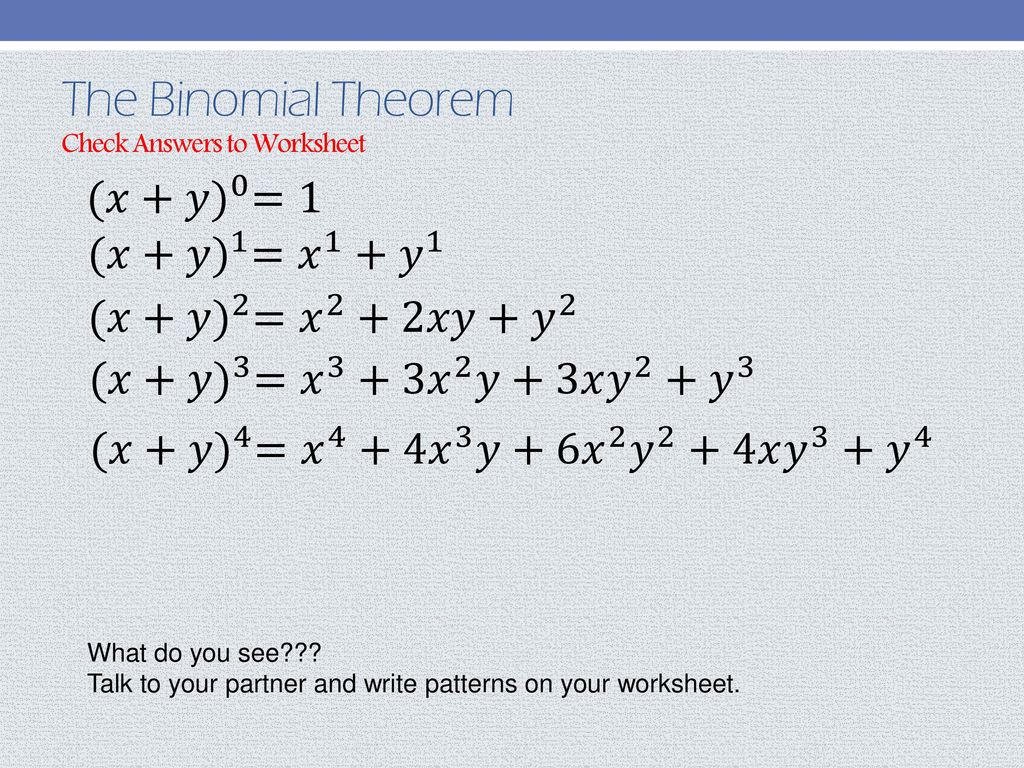


A Quick And Efficient Way To Expand Binomials Ppt Download
Mar 25, 18 · The three zeroes in the above shown graph are *1 point2, 3,12, 3, 13, 1, 22, 3, 1 wealo The base of an sosceles triangle i ulaam the perimeter is 45 cmWhat is the length of the other remaining sides?Expand (xyz)^2 (x − y − z)2 ( x y z) 2 Rewrite (x−y −z)2 ( x y z) 2 as (x−y−z)(x−y−z) ( x y z) ( x y z) (x−y− z)(x−y−z) ( x y z) ( x y z) Expand (x−y−z)(x−y−z) ( x y z) ( x y z) by multiplying each term in the first expression by each term in the second expressionSep 23, 16 · To expand #(xy)^6#, use the coefficients in front of # x^6y^0#, #color(white)(aa)x^5y^1#, #color(white)(aa)x^4y^2#, etc, with the exponent of #x# starting at 6 and decreasing by one in each term, and the exponent of #y# starting at 0 and increasing by one in each term Note the sum of the exponents in each term is 6


How To Find The First Three Terms In Descending Powers Of X In The Expansion Of X 2 X 5 Quora



Find The Coefficient Of X 6y 3in The Expansion Of X 2y 9
Aug 09, 18 · Hi Heureka, I am wondering if it can still be done easily if it is made more complicated ?



Sample Practice Exam 11 March Questions Studocu
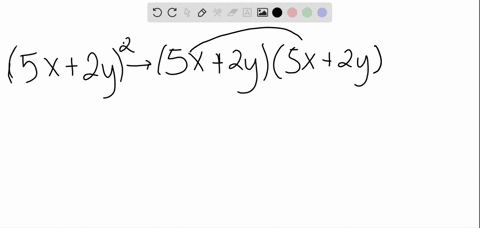


Solved Expand X Y 5
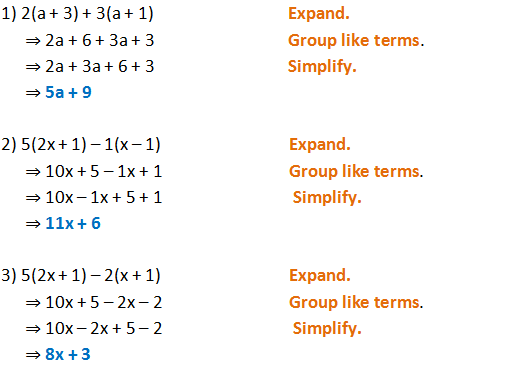


Form 2 Unit 2 Lesson 5 Expansion Of Algebraic Expression Brilliant Maths
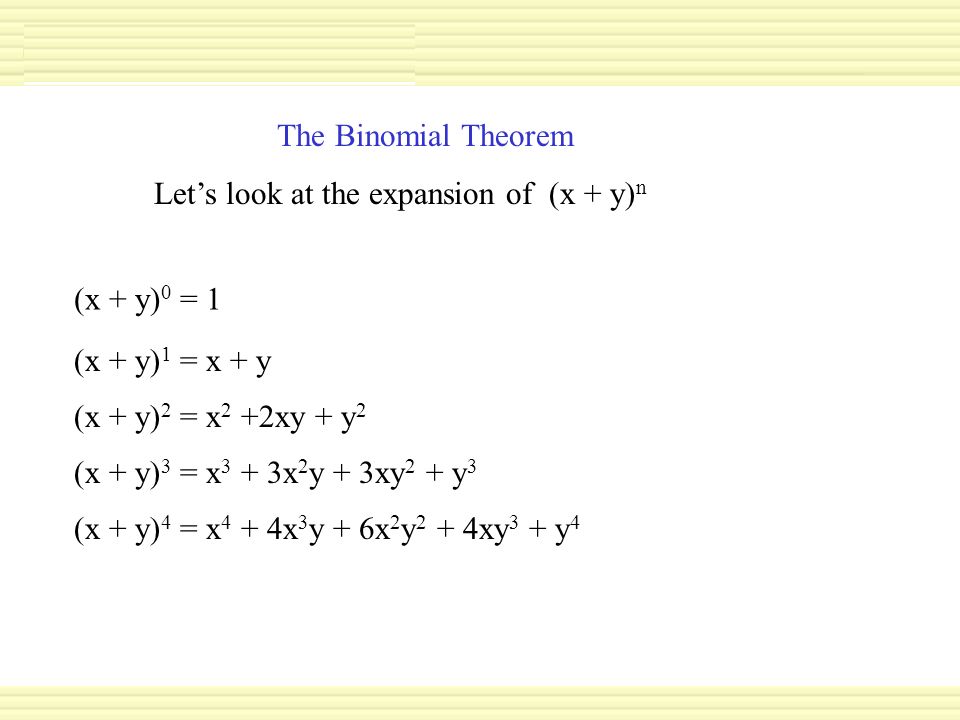


Simplify The Expression Ppt Video Online Download


Expand The Following X Y 2 Z 3
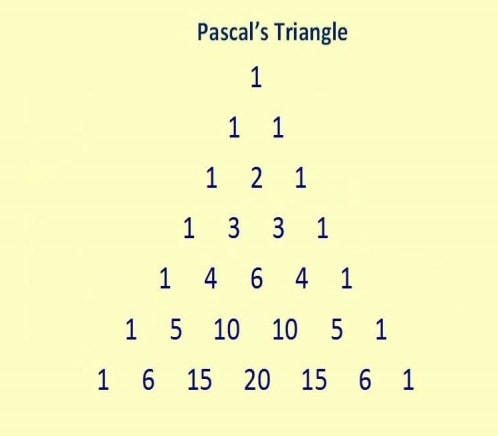


Binomial Theorem Properties Terms In Binomial Expansion Examples Pdf



Simplifying Algebraic Expressions Expanding



Teguhrafly Fungsi Eksponen Dan Logaritma



Using Binomial Theorem Expand X Y 5 X Y And Hence Find The Value Of Root 2 1 5 Root 2 1 5 Maths Binomial Theorem Meritnation Com


Factoring And Expanding Algebraic Expressions Rules For Transforming Algebraic Expressions Binomial Expansion Algorithm Binomial Theorem Pascal S Triangle
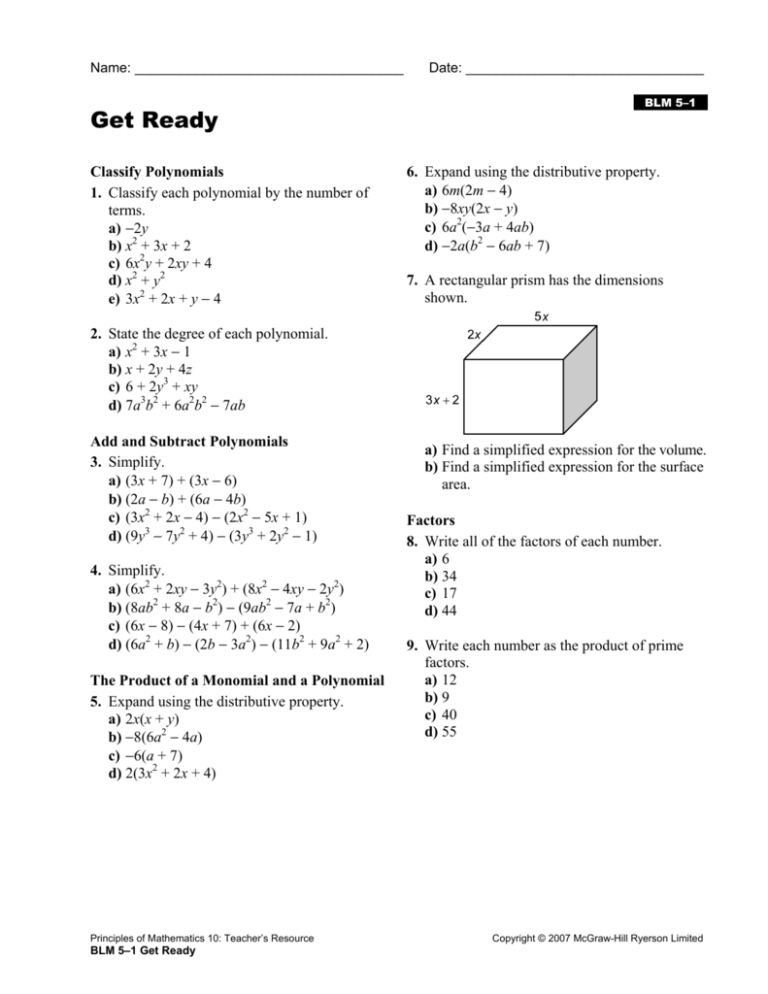


Extra Practice



Expand And Simplify Binomial Squares 2x 3y 2 Youtube



Skoften Net Een A Voor Creativiteit Facebook
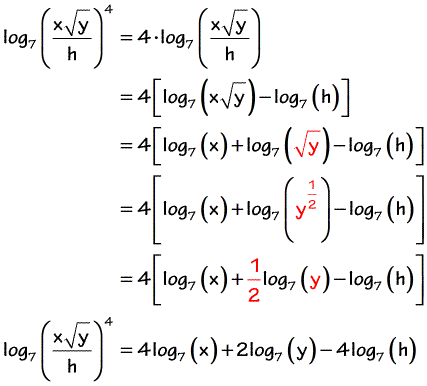


Expanding Logarithms Chilimath
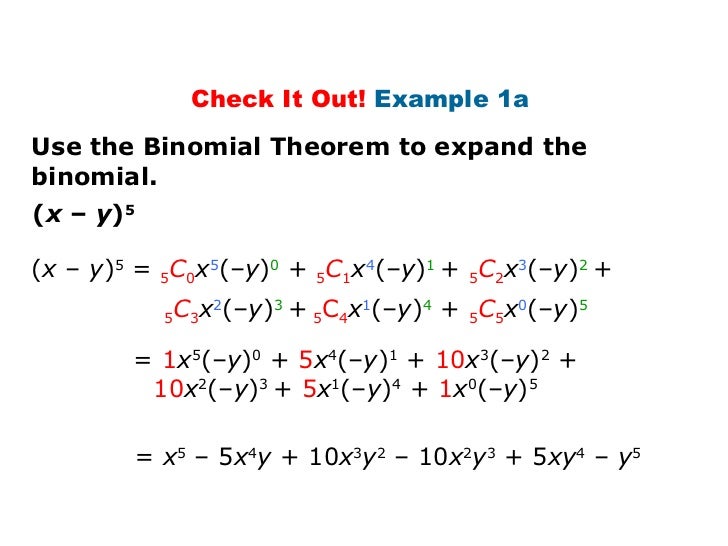


Binomial



Example 7 Find Coefficient Of X6y3 In Expansion X 2y 9



Taylors And Maclaurins Series Mathematical Relations Mathematical Concepts



Binomial Theorem Wikipedia



Expand Log 3 Xy 2 Z 3



How To Expand Using The Identity X Y 3 X3 Y3 3x2y 3xy2 Youtube
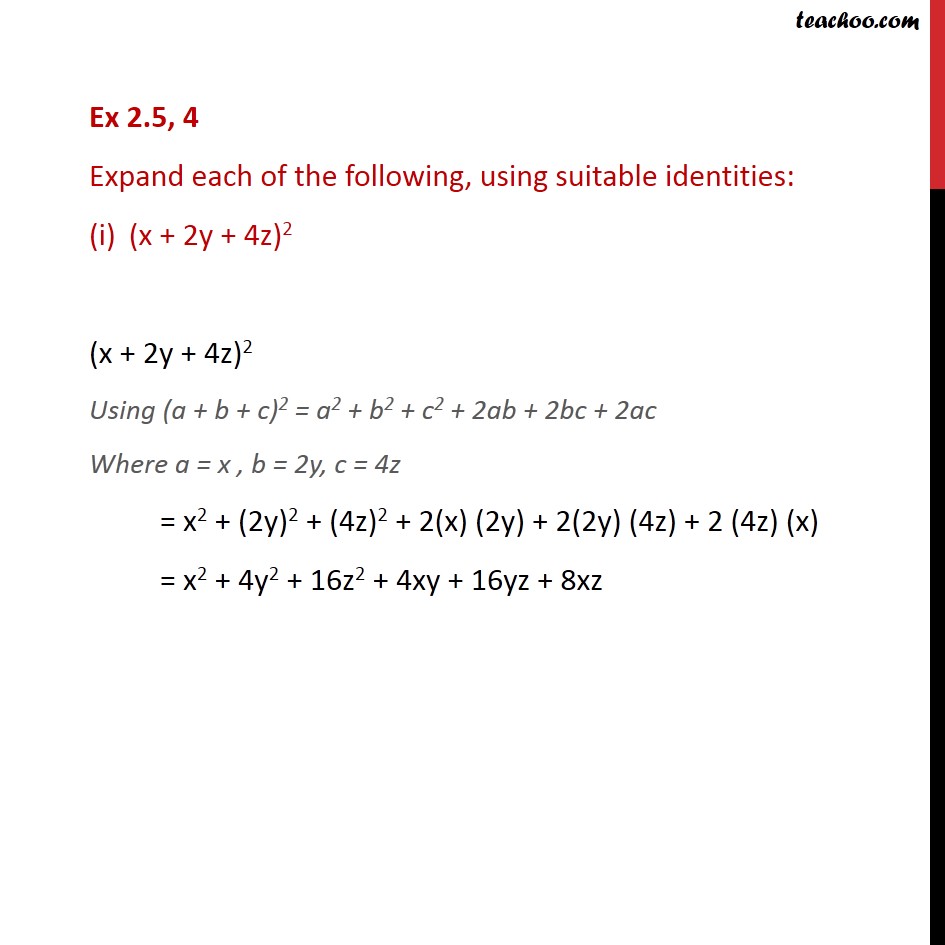


Ex 2 5 4 Expand Each Of The Following Using Suitable



Lesson Video Expanding An Expression To A Difference Of Two Squares Nagwa
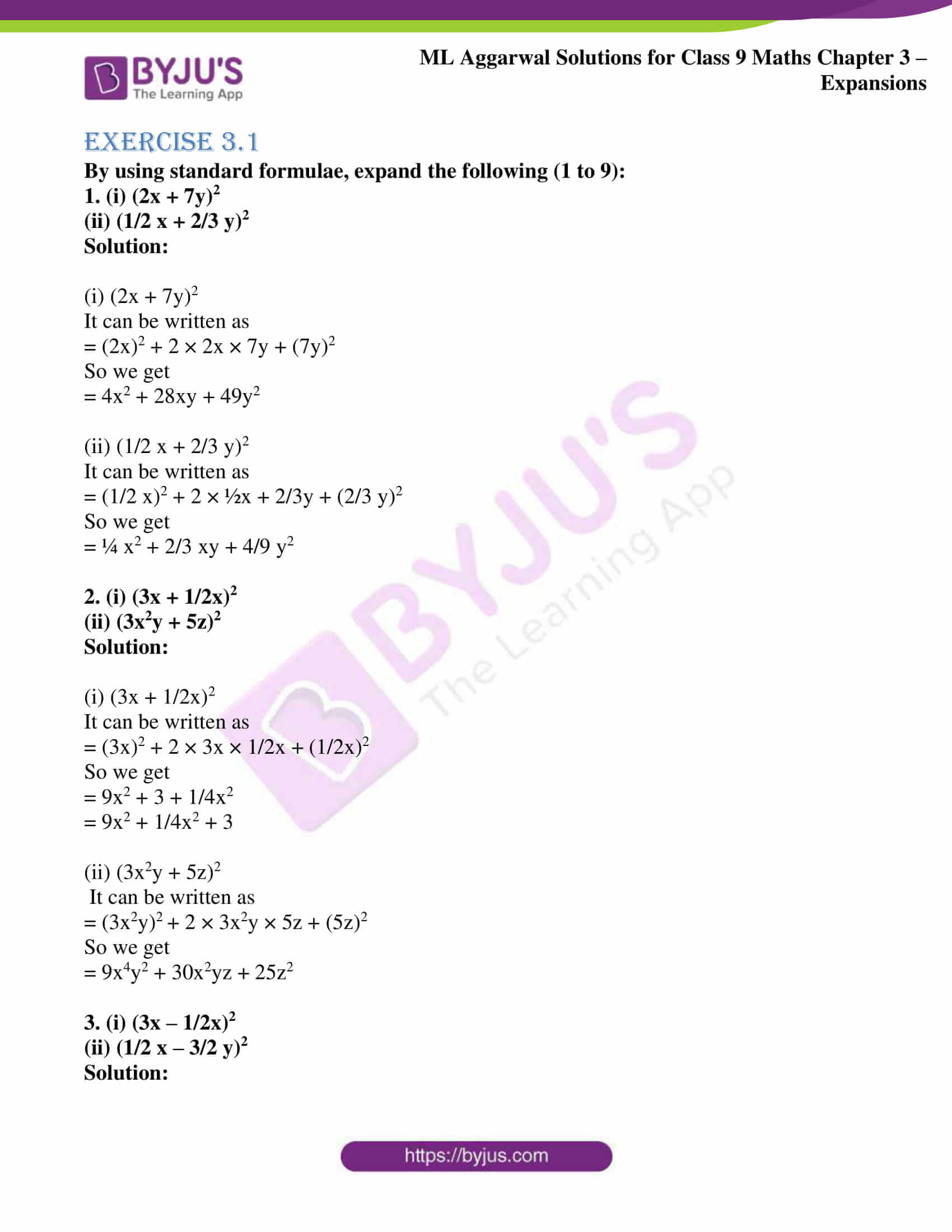


Ml Aggarwal Solutions For Class 9 Chapter 3 Expansions Download Free Pdf
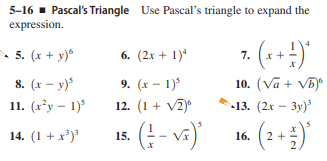


Answered 5 16 Pascal S Triangle Use Pascal S Bartleby



Using Suitable Identities Expand The Following I X5 3y 2 Ii 11x 0 2y 2 Iii 4a 5b 2 Iv Y 25x 3 V 3a 5b 4c 2 Vi 12a B 13c 2


Expand E X Cosy By Taylors S Theorem About The Point 1 P 4 Up To The Second Degree Terms Sarthaks Econnect Largest Online Education Community



Expand Calcme Documentation Wiris
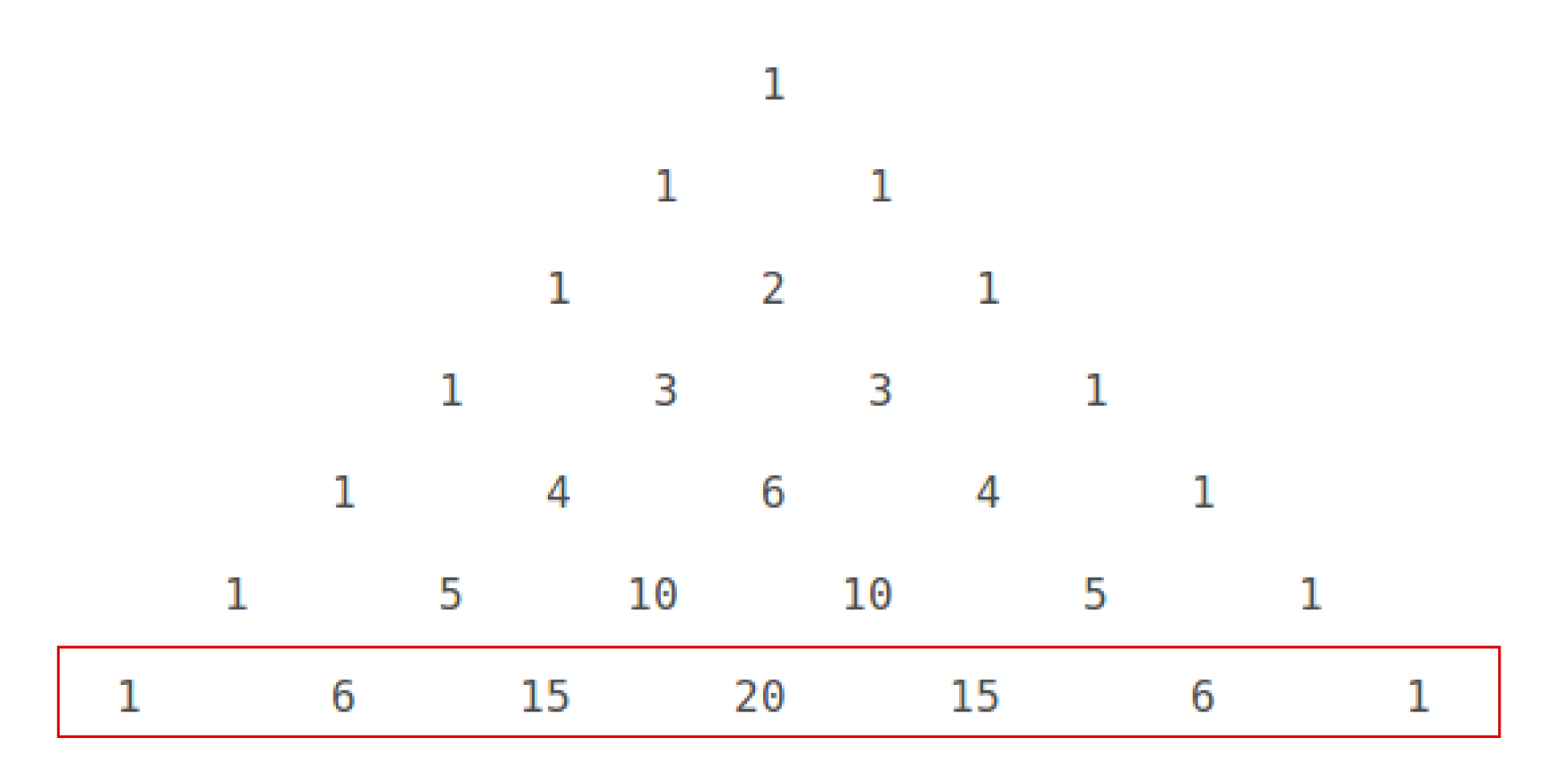


How Do You Expand X Y 6 Using Pascal S Triangle Socratic
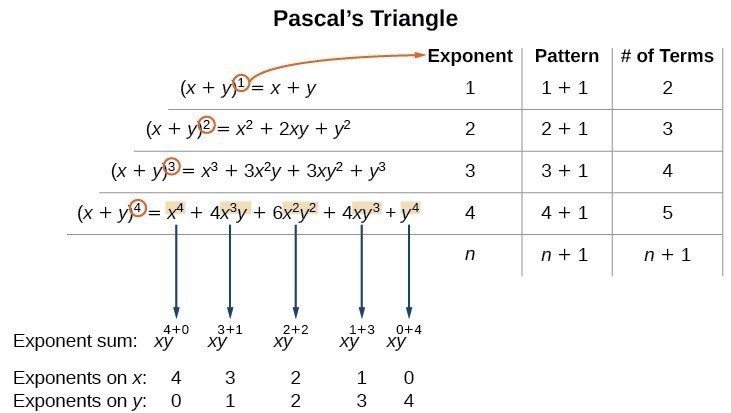


Using The Binomial Theorem College Algebra


Expand Log 1 X Y Up To Third Degree Terms About The Origin Sarthaks Econnect Largest Online Education Community



Pls Solve It Fast 5 6 8 9 14 15 Expand Use Appropriate Formulae Maths Meritnation Com
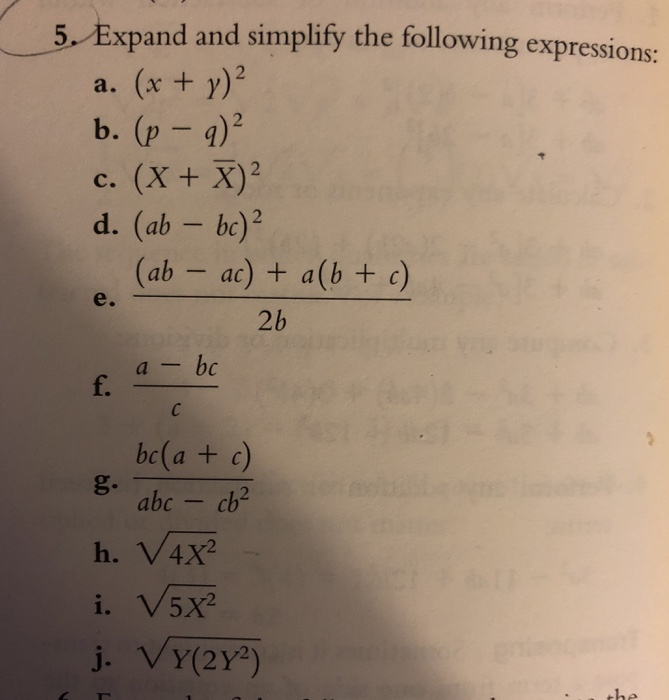


Solved 5 Expand And Simplify The Following Expressions Chegg Com
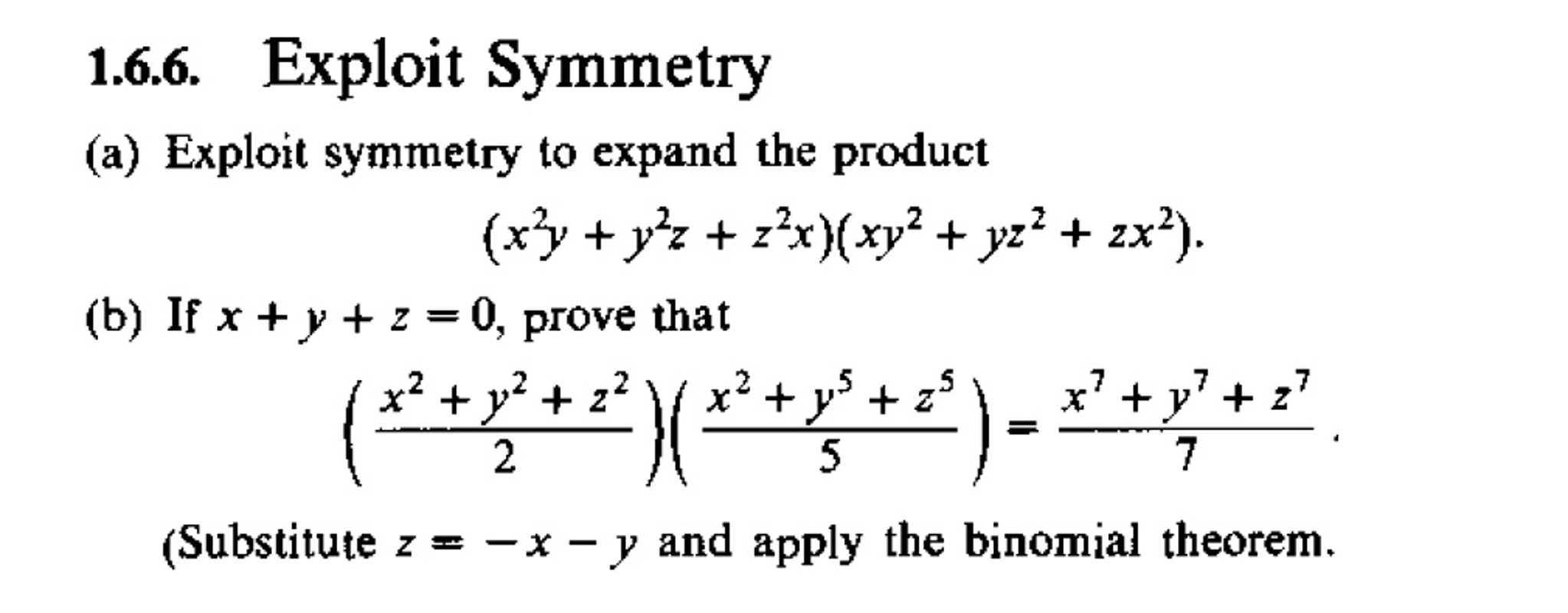


Exploit Symmetry A Exploit Symmetry To Expand Th Chegg Com



Solved In Exercises 9 30 Use The Binomial Theore



How Can We Expand X Y 1 2 Youtube


Expand X Y 3 Sarthaks Econnect Largest Online Education Community



X Y Y Z Z X 2 Write It In The Expanded Form Brainly In



Solved Y 1 2x Y 0 Xy 2 X Y 0 A Solve The Chegg Com
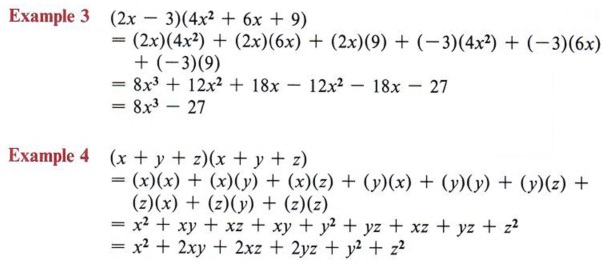


Expand Expand Terms Multiply Polynomials With Step By Step Math Problem Solver



X 2y Xy 2 2 Expand Using Identities Brainly In



Binomial Theorem By Calum Blair Issuu



Binomial Theorem Wikipedia



Lesson Explainer Pascal S Triangle And The Binomial Theorem Nagwa


Expanding Polynomial Factors Maths First Institute Of Fundamental Sciences Massey University
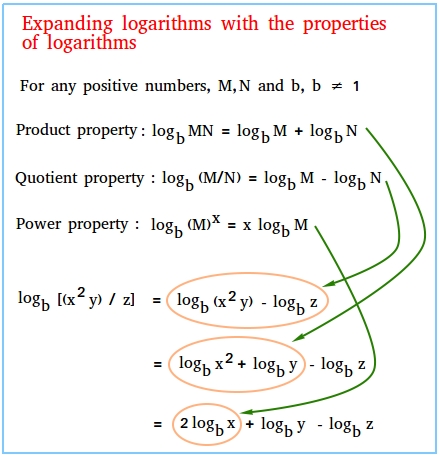


Expanding Logarithms


Expand Tan 1y X About The Point 1 1 Using Taylor S Theorem Up To The Second Degree Terms Sarthaks Econnect Largest Online Education Community



Expand X X Y 3 3xy X Y


How To Expand X 2y 5 Using Binomial Expansion Quora
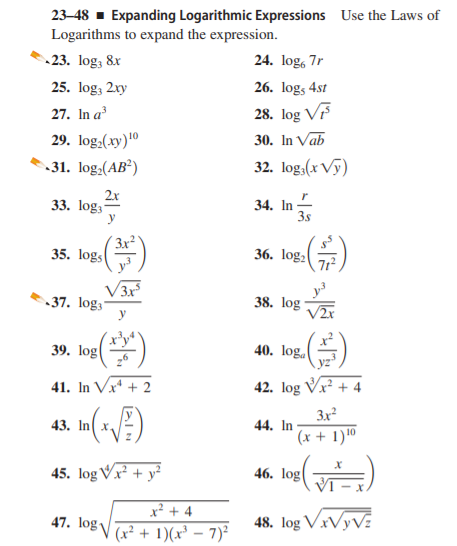


Answered 23 48 Expanding Logarithmic Bartleby



Using Binomial Theorem Expand X Y 5 X Y 5 Dot And Hence Find
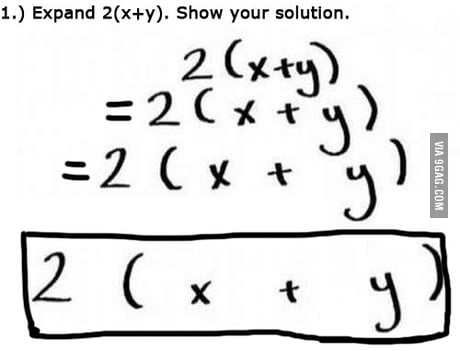


Expand 2 X Y 9gag



Example 7 Find Coefficient Of X6y3 In Expansion X 2y 9
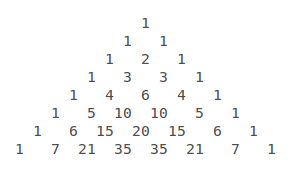


How Do You Find The Binomial Expansion Of X Y 7 Socratic
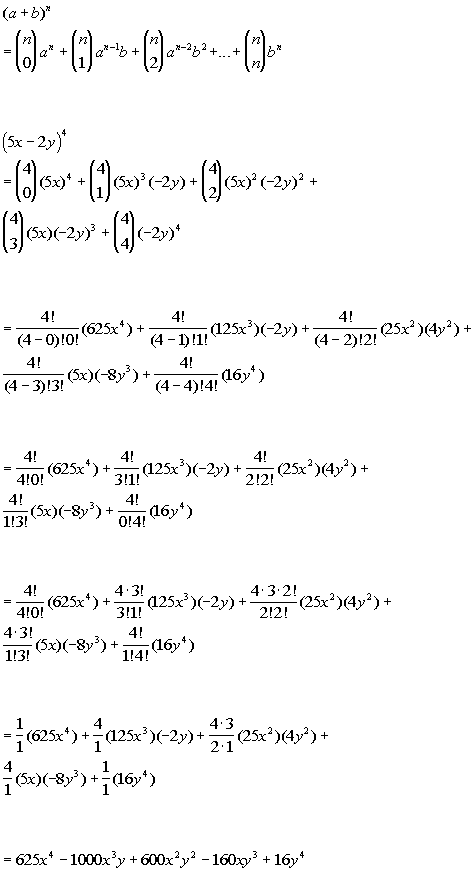


Tutorial 54 The Binomial Theorem



Ex 8 2 5 Find 4th Term Of X 2y 12 Chapter 8 Class 11



Expand X Y 3 And X Y 2 Brainly In
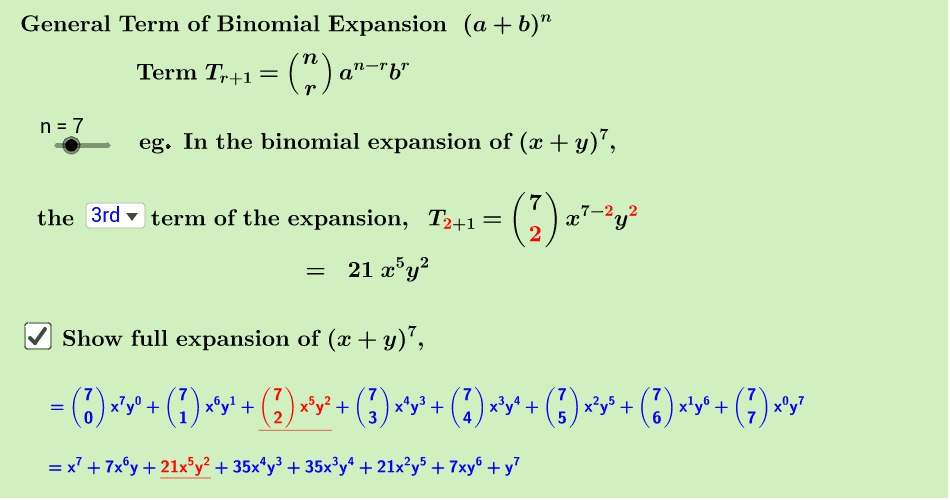


General Term Of Binomial Expansion Geogebra


Expand X Y Z Square Brainly In
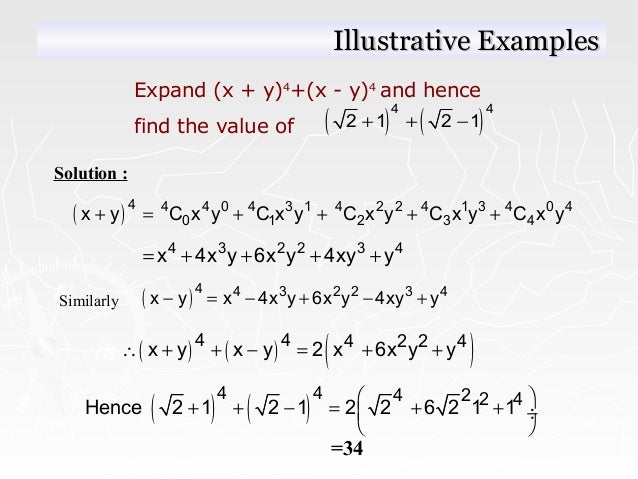


The Binomial Theorem



Myriorama Cards Were Invented In France Around 13



Taylors Series Expand Xy 2 Cos Xy In The Powers Of X 1 And Y P 2 To 2 Degree Terms Youtube


How To Expand E Xcosy In Powers Of X And Y Pi 2 Using Taylor S Theorem Quora


Solution Expand Using Properties Of Logarithms Log Xy 2 Y



Learn Algebraic Identity Of X Y And X Y In 3 Minutes
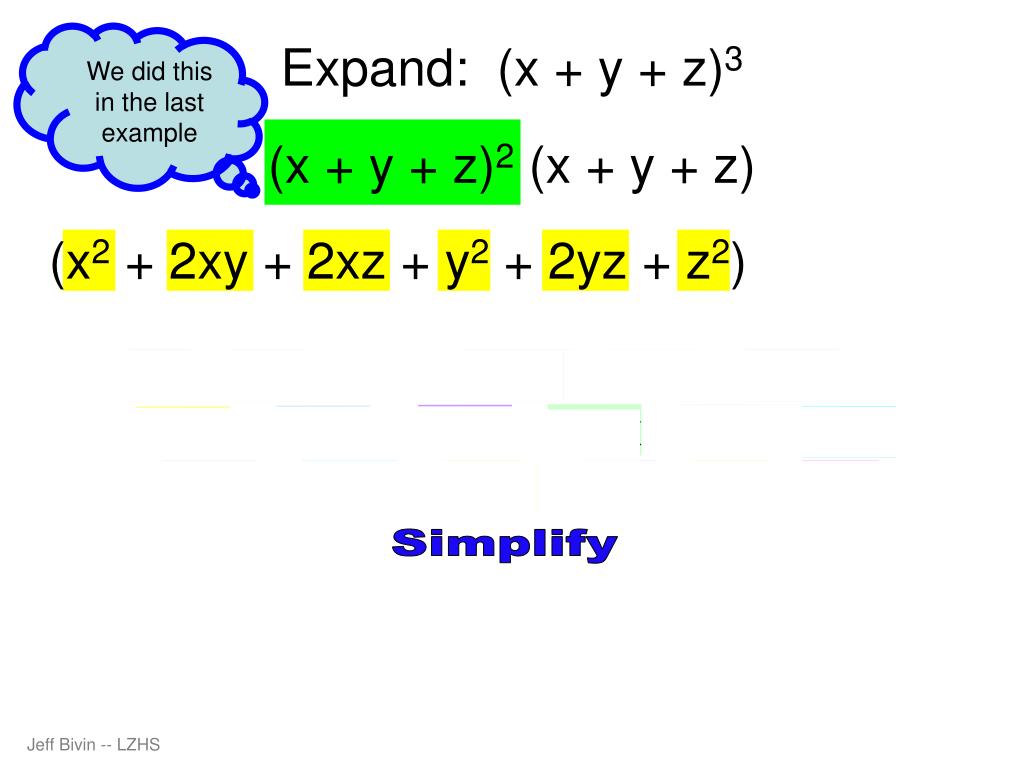


Ppt Binomial Expansion And More Powerpoint Presentation Free Download Id
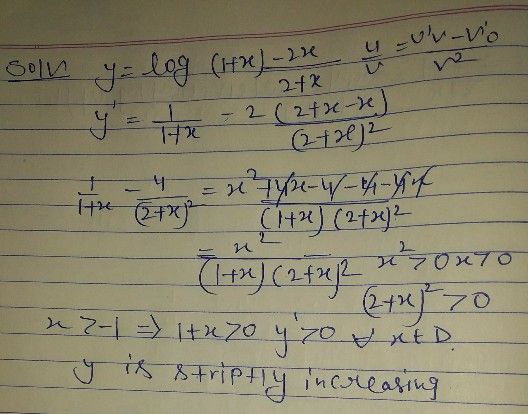


Expand The Function F X Y E1x See How To Solve It At Qanda



Using The Binomial Theorem College Algebra


9 5 The Binomial Theorem Lets Look At



A Expand And Simplify The Binomial Expression 2x Y Sup 5 Sup B Use The First Four Terms Of The Expansion Above To Approximate The Value Of 3 8 Sup 5 Sup



Learn Algebraic Identity Of X Y And X Y In 3 Minutes



A X3y 3 B X 2y 3 See How To Solve It At Qanda



Ex 8 2 3 Write General Term In X2 Y 6 Chapter 8 Ex 8 2



Expan It Yeh Exams Bhi Naaa Facebook



0 件のコメント:
コメントを投稿